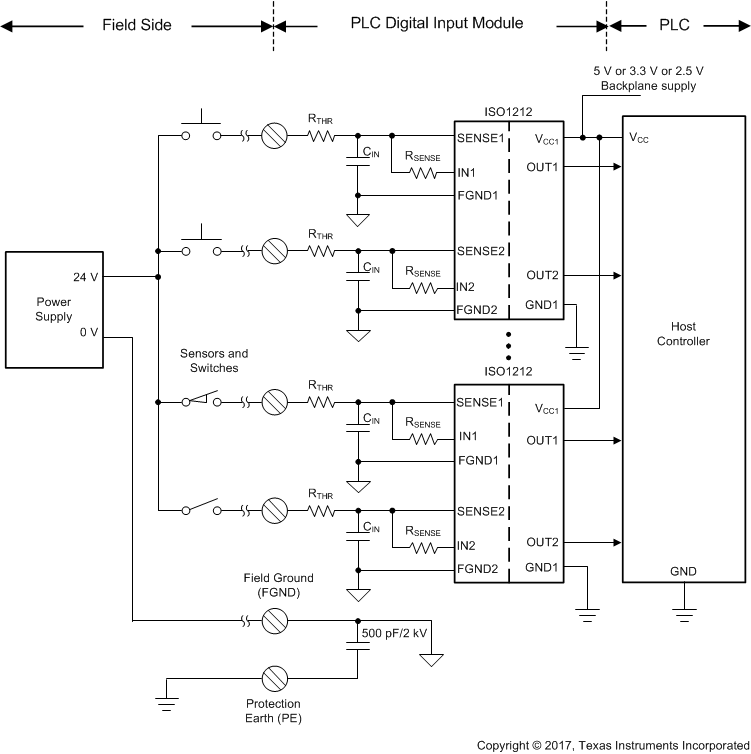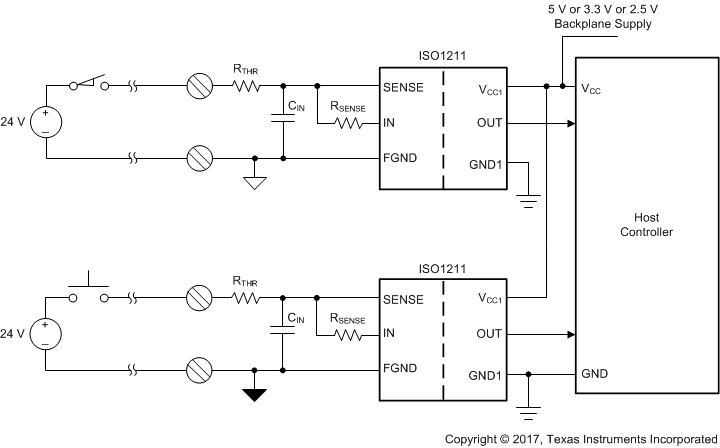SLLSEY7F June 2017 – April 2020 ISO1211 , ISO1212
PRODUCTION DATA.
- 1 Features
- 2 Applications
- 3 Description
- 4 Revision History
- 5 Pin Configuration and Functions
-
6 Specifications
- 6.1 Absolute Maximum Ratings
- 6.2 ESD Ratings
- 6.3 Recommended Operating Conditions
- 6.4 Thermal Information
- 6.5 Power Ratings
- 6.6 Insulation Specifications
- 6.7 Safety-Related Certifications
- 6.8 Safety Limiting Values
- 6.9 Electrical Characteristics—DC Specification
- 6.10 Switching Characteristics—AC Specification
- 6.11 Insulation Characteristics Curves
- 6.12 Typical Characteristics
- 7 Parameter Measurement Information
- 8 Detailed Description
- 9 Application and Implementation
- 10Power Supply Recommendations
- 11Layout
- 12Device and Documentation Support
- 13Mechanical, Packaging, and Orderable Information
Package Options
Refer to the PDF data sheet for device specific package drawings
Mechanical Data (Package|Pins)
- DBQ|16
Thermal pad, mechanical data (Package|Pins)
Orderable Information
9.2.1 Sinking Inputs
Figure 16 shows the design for a typical multichannel, isolated digital-input module with sinking inputs. Push-button switches, proximity sensors, and other field inputs connect to the host controller through an isolated interface. The design is easily scalable from a few channels, such as 4 or 8, to many channels, such as 256 or more. The RSENSE resistor limits the current drawn from the input pins. The RTHR resistor is used to adjust the voltage thresholds and limit the peak current during surge events. The CIN capacitor is used to filter noise on the input pins. For more information on selecting RSENSE, RTHR, and CIN, see the Detailed Design Procedure section.
The ISO121x devices derive field-side power from the input pins which eliminates the requirement for a field-side, 24-V input power supply to the module. Similarly, an isolated dc-dc converter creating a field-side power supply from the controller side back plane supply is also eliminated which improves flexibility of system design and reduces system cost.
For systems requiring channel-to-channel isolation on the field side, use the ISO1211 device as shown in Figure 17.
 Figure 16. Typical Application Schematic With Sinking Inputs
Figure 16. Typical Application Schematic With Sinking Inputs  Figure 17. Single-Channel or Channel-to-Channel Isolated Designs With ISO1211
Figure 17. Single-Channel or Channel-to-Channel Isolated Designs With ISO1211